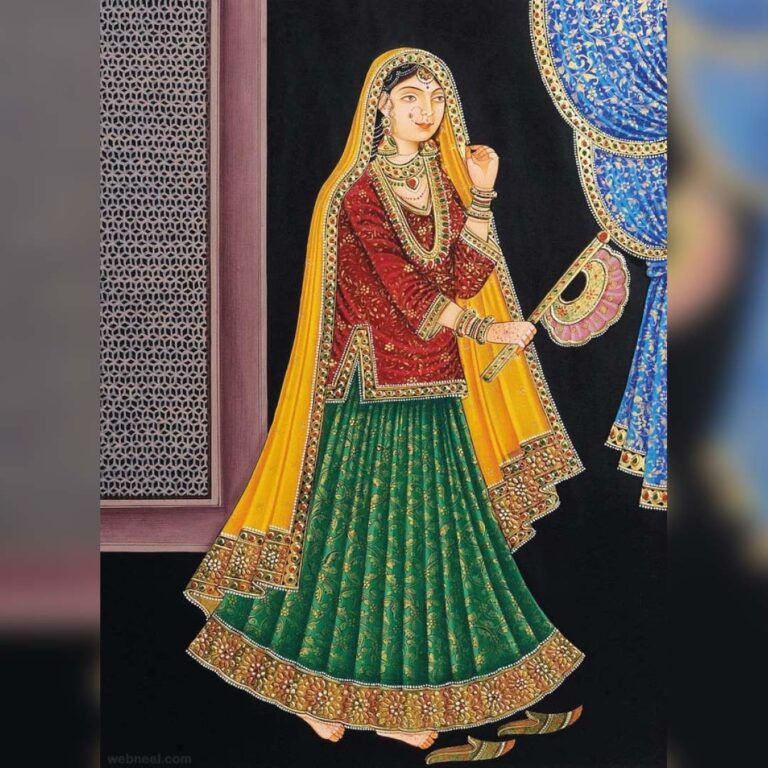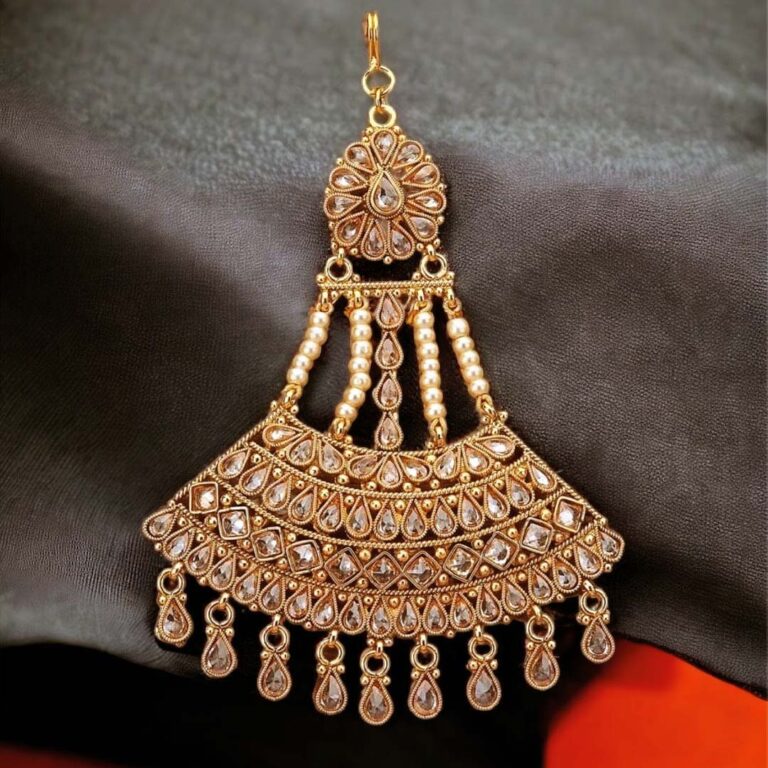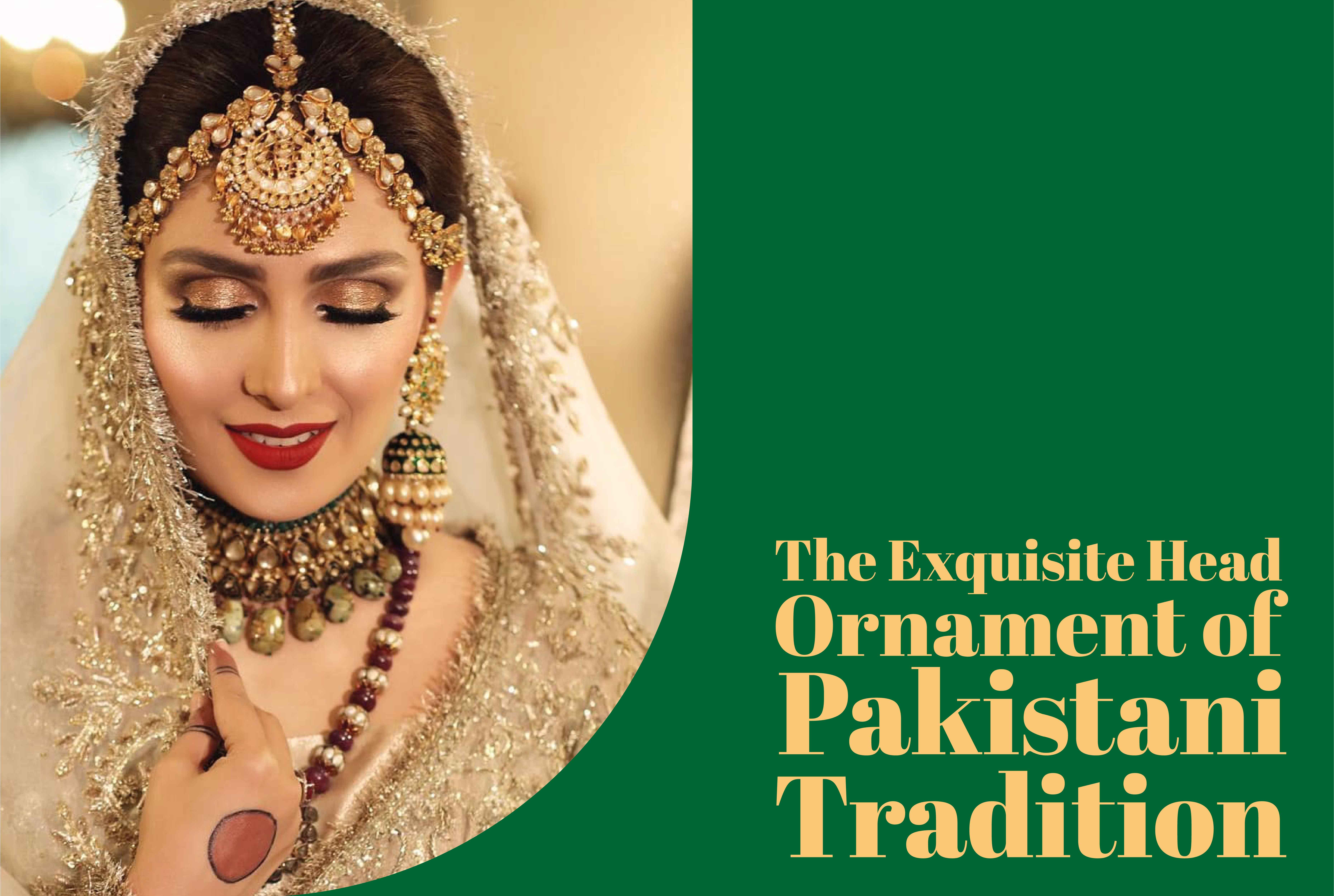Jhoomar, an iconic piece of traditional Pakistani jewelry, holds a significant place in the country’s cultural heritage. This head ornament, also known as “Passa,” is a testament to the craftsmanship, elegance, and regal allure of Pakistan’s rich history. With intricate designs, precious gemstones, and a history that dates back centuries, the Jhoomar remains a timeless accessory that has transcended generations.
In conclusion, the Jhoomar stands as a testament to the elegance and sophistication of traditional Pakistani jewelry. With its history, craftsmanship, and ability to seamlessly blend tradition and modernity, the Jhoomar remains a cherished and iconic accessory that embodies the essence of Pakistan’s rich cultural tapestry.
Origin

The origins of the Jhoomar can be traced back to the Mughal era, a time of opulence and artistic refinement in the Indian subcontinent. Named after the swaying motion it creates as it dangles from one side of the forehead, the term “Jhoomar” means “swinging” or “pendulum” in Urdu. Initially worn by noblewomen and royalty, the Jhoomar represented not only status but also served as an expression of femininity and beauty.
Design

Jhoomars are known for their intricate designs and attention to detail. Craftsmen employ techniques like filigree, enamel work, and stone-setting to create these masterpieces. The base metal is often gold or silver, adorned with pearls, diamonds, emeralds, rubies, and other precious stones. Floral motifs, peacocks, and geometrical patterns are commonly incorporated into the design, showcasing the influence of Mughal aesthetics.
Versatility in Bridal Attire

In modern times, the Jhoomar has maintained its significance, especially in bridal jewelry. It is an integral part of a bride’s ensemble, enhancing her beauty and completing her look. The Jhoomar is often paired with matching necklaces, earrings, and other pieces to create a harmonious and regal appearance.
Cultural Diversity

Pakistan’s diverse regions bring forth a variety of Jhoomar styles. For instance, the elaborate Kundan Jhoomar of Lahore features intricate enamel work and gemstones, while the Hyderabadi Jhoomar is known for its distinctive use of pearls and traditional designs. This diversity reflects the cultural richness of Pakistan and its various regional influences.
Bridging Traditions and Modernity

Despite its historical roots, the Jhoomar continues to evolve with the times. Jewelry designers are finding innovative ways to reinterpret this traditional piece, making it more adaptable to contemporary styles while preserving its essence. Modern brides may opt for lighter versions of the Jhoomar, with a focus on comfort and wearability.

